This article was co-authored by Scott Anderson, MA, ATC, SFMA, DNSP. Scott Anderson is the Chief Clinical Officer at SyncThink, an award winning startup founded out of Stanford University. Scott previously served as the Director of Sports Medicine/Athletic Training for Stanford University for over ten years from 2007 to 2017. Scott has over 18 years of clinical and management experience, and is a recognized international speaker on topics of clinical specialization, which include developmental kinesiology, neuroscience/concussion, and movement dysfunction. He is a certified Dynamic Neuromuscular Stabilization Practitioner (DNSP), Sports Safety Specialist and is certified to conduct Selective Functional Movement Assessments (SFMA), and Functional Movement Screenings (FMS). He earned a BS in Athletic Training from Washington State University in 2000 and an MA in Athletic Administration from Saint Mary's College in 2002.
This article has been viewed 123,975 times.
If you have injured your back, either at work or otherwise, it can be a debilitating and challenging condition to recover from. However, with the right lifestyle modifications, lots of rest, and appropriate medical care, you can give yourself the best possible chance for full recovery. Note that if your back pain persists or does not start to get better shortly after the injury, it is always best to see a physician for professional advice on how to proceed.
Steps
Trying Lifestyle Strategies
-
1Evaluate the initial injury. This can be difficult when you have pain throbbing up and down your spine, as it may seem to come from every part of the back; however, with an injury there should be one main focal area. Press gently along your spine with your fingers, starting with the lower back and moving upwards. You may need someone to help you do this; some areas of the spine are difficult to get to.
- Assess the quality of the pain — note whether it is dull and achy, sharp and stabbing, burning, or whatever other "descriptors" you would use for your pain. Keep a record of this for a few days after your injury to see how the pain progresses.
- To get a good baseline, rate your pain on a scale of one to 10, with 10 being the worst pain you’ve ever had. After a few days, rate it again. You can do this every three to four days to see if you are improving. Research shows that this is a valid way to monitor your current pain.
- If you do end up needing to see a doctor for your back injury, having information regarding the quality of the pain, and the progression of the pain (improving or worsening following the injury), can be very helpful in establishing a diagnosis and treatment plan.
-
2Be aware of "red flags" that warrant immediate medical attention. If you are in so much pain that you cannot walk or are finding it hard to feel your legs, get somebody to take you to the hospital. Do not try to take yourself there; if your back worsens and you find you cannot move you may end up stuck somewhere on the way, and you possibly may end up in danger. You may also want to seek immediate medical attention if you develop the following symptoms:[1]
- A feeling of numbness in the pelvis or lower back, and the area surrounding it.
- Shooting pains down one or both legs.
- Feeling weak or unsteady when you try to stand, or your legs suddenly giving way beneath you either when you are standing normally or bending.
- Problems with controlling your bowels or bladder.
Advertisement -
3Be sure to rest. Assuming your back injury is not severe enough to warrant going to the hospital, allow yourself some rest time at home to see if your back pain improves. You may wish to spend the first few days in bed until the pain becomes more comfortable. Watch some DVDs or some TV, read a few good books, and keep yourself entertained. Do not spend too long in bed though, because this can make your back stiff, which can slow the healing process.
- Note that while rest is important initially after an injury, lying in bed for too long can delay recovery. It’s best to only rest for 24 hours. If you can, make sure you get out of bed, even if only for a few minutes every hour. Becoming active sooner can reduce a delay in recovery.
-
4Avoid strenuous activity. Especially during the initial stages of your injury, it is important to take it easy and to not do anything that worsens your back pain or could possibly further the injury. Take time off work if needed, and file a workers compensation claim if the injury was sustained at the workplace. Or, if you cannot take a "leave" from work, perhaps ask your boss if you can have alternate duties such as a desk job for a while as you recover (if your usual job consisted of heavy lifting or other manual labor).
- As you recover, avoid standing or sitting in the same position over prolonged periods of time if this exacerbates your back pain.[2]
- Also avoid sports or physical activity that risk further damage to your back. See a physician for guidelines on when and how to return to activity in the safest manner possible.
-
5Use ice and/or heat. If you are in a good deal of pain while you are healing, you could try applying ice or heat. Ice will help control inflammation, and is especially effective right after the incident (for an acute injury). Heat should not be used until around three days after the injury has been sustained, as it can contribute to inflammation during this time. After those three days however it is effective in relaxing painful muscle spasms and relieving tension in the ligaments and muscles.
- To ice your back, wrap a cold pack, bag of ice, or even a bag of frozen vegetables in a thin towel and apply it to your injury for 15 – 20 minutes. Allow your skin to return to normal temperature before you begin to ice again. Never apply ice directly to your back.
- If you still have pain after three days or if your back pain is chronic, you can apply heat. Try a heating pad, a hot water bottle, or a heat pack. Again, the heat should not be applied directly to your skin – use a thin towel or even a t-shirt to wrap the heat source and protect your skin.
-
6Consider the duration of the injury. There are two types of back pain: acute and chronic. Acute is a type of injury that is there for a few days and then goes away, best described as "coming and going." Symptoms are often reasonably intense and heal in around four to six weeks. Chronic pain is more of a persistent pain that lasts between three to six months, or longer.
- Particularly if your back pain is not improving, it is important to see a doctor sooner rather than later. Medical studies have shown that faster intervention from your doctor can help to prevent an acute (short-term) injury from becoming a chronic (long-term) one.
-
7Opt for physiotherapy and/or massage.[3] Especially if you have a muscular injury affecting your back, receiving physiotherapy and/or massage treatment may help to speed recovery and to diminish the pain. You may receive some coverage for these if it is a work-related injury.
-
8Look into a chiropractor or an osteopath.[4] Sometimes an "adjustment" is needed in your back to help you heal. Seeing a chiropractor or an osteopath for an assessment is an excellent idea if you find that your back pain is not getting better on its own.
-
9Adapt your sleeping situation. If you are suffering from ongoing back pain, it might be worthwhile to consider buying a new mattress (if you are finding your current one uncomfortable).[5] Another option to consider is sleeping with a pillow between your legs. For some back injuries, this can diminish the stress put on your back while sleeping and thus reduce pain.
-
10Pay attention to proper posture and lifting techniques. Once you begin resuming basic activities of daily living, make sure that you are paying attention to proper posture. Keep your back straight when sitting, making sure you take frequent breaks and move around at least once every 30 to 60 minutes. When getting out of bed, make sure you practice proper techniques. To start off, lie on your back and keep your knees bent and feet flat. Then roll to the side, slowly moving your legs over the bed. From this position, use your arm that is against the bed to help slowly push you up into a sitting position. When lifting, make sure you use your legs. If you are going to lift an object, make sure you keep it close to your body at all times.
-
11Ensure a gradual recovery plan. The most important thing when recovering from back pain is to have a "slow and steady" approach - in other words, not to rush back to work or to activities, as you do not want to cause further damage. Speak to your doctor and/or physiotherapist or other healthcare professional about a gradual return to work and to activities.
-
12Check into worker's compensation if this applies to you. If you injured your back "on the job," you may be eligible for financial compensation that can help to cover lost time at work, as well as any medical treatments, medications, and physiotherapy sessions. It is definitely worth looking into as it can significantly cut back on the costs of treatment.
Trying Medical Strategies
-
1Take over-the-counter painkillers. For back injuries that are not overly severe, taking Acetaminophen (Tylenol) and/or Ibuprofen (Advil) for pain control and inflammation may be of help.[6] Both of these medications are available over-the-counter at your local pharmacy or drugstore. Follow the dosing instructions on the bottle.
- Robaxacet is another option for pain control that also contains a muscle relaxant property.[7] If your back pain is caused from a strained or injured muscle, this is likely to be your best bet to help to alleviate the pain, as well as to speed recovery.
-
2See your doctor for prescription painkillers. If you have sustained a more severe back injury, you may need to opt for stronger pain medications. Interestingly enough, medical trials have shown that getting the pain under control early in a back injury is key to optimal healing. This is because chronic back pain can become a neurological pattern in the central nervous system which makes it more difficult to get rid of the longer you have had it for.
- Stronger painkillers include prescription strength Naproxen or Tylenol #3 (Tylenol mixed with Codeine), among others.[8]
-
3Get an injection.[9] Depending upon the specific type of injury in your back, sometimes an injection (of a corticosteroid medication, normally, which works to fight inflammation and pain) can be of great help. Speak to your doctor if you are interested, or to your naturopath for "prolotherapy" (which is the "natural equivalent" to a corticosteroid injection).
-
4Consider an implantable device and/or surgery.[10] As a last resort for severe back pain, surgeons can either implant a device that stimulates your spinal cord to help diminish pain, or they can perform back surgery if there is an anatomical injury that can be resolved through surgery. Note that both of these are "last resort" options that are only considered after you have "failed" to improve with lifestyle methods, rest, and medication.[11]
-
5Be aware of depression as a co-morbidity with back pain. More than 50% of people with chronic back pain develop temporary or ongoing depression alongside the back pain, oftentimes related to the disability they face as a result of the injury. If you feel like you may have depression, or be at risk of developing it, speak to your doctor for guidance and medication if needed.[12]
-
6Understand the possible diagnoses that cause back pain.[13] Knowing the cause of your back pain can be very helpful to healing it effectively. Some of the most common causes of back pain include:
- Poor posture at work, with too much standing or continually sitting in one position.
- A muscular injury leading to muscle spasms.
- Degenerative disc disease.
- A herniated disc.
- Spinal stenosis - where the vertebral canal (housing your spinal cord) narrows over time.
- Other more rare conditions such as a tumor, a fracture, or an infection in your spinal canal.
What Are Common Mistakes Athletes Make When Recovering From A Back Injury?
Expert Q&A
-
QuestionWhat are common mistakes athletes make when recovering from a back injury?
 Scott Anderson, MA, ATC, SFMA, DNSPScott Anderson is the Chief Clinical Officer at SyncThink, an award winning startup founded out of Stanford University. Scott previously served as the Director of Sports Medicine/Athletic Training for Stanford University for over ten years from 2007 to 2017. Scott has over 18 years of clinical and management experience, and is a recognized international speaker on topics of clinical specialization, which include developmental kinesiology, neuroscience/concussion, and movement dysfunction. He is a certified Dynamic Neuromuscular Stabilization Practitioner (DNSP), Sports Safety Specialist and is certified to conduct Selective Functional Movement Assessments (SFMA), and Functional Movement Screenings (FMS). He earned a BS in Athletic Training from Washington State University in 2000 and an MA in Athletic Administration from Saint Mary's College in 2002.
Scott Anderson, MA, ATC, SFMA, DNSPScott Anderson is the Chief Clinical Officer at SyncThink, an award winning startup founded out of Stanford University. Scott previously served as the Director of Sports Medicine/Athletic Training for Stanford University for over ten years from 2007 to 2017. Scott has over 18 years of clinical and management experience, and is a recognized international speaker on topics of clinical specialization, which include developmental kinesiology, neuroscience/concussion, and movement dysfunction. He is a certified Dynamic Neuromuscular Stabilization Practitioner (DNSP), Sports Safety Specialist and is certified to conduct Selective Functional Movement Assessments (SFMA), and Functional Movement Screenings (FMS). He earned a BS in Athletic Training from Washington State University in 2000 and an MA in Athletic Administration from Saint Mary's College in 2002.
Sports Medicine & Injury Prevention Specialist
-
QuestionHow long does it take for a back muscle injury to heal?
 Scott Anderson, MA, ATC, SFMA, DNSPScott Anderson is the Chief Clinical Officer at SyncThink, an award winning startup founded out of Stanford University. Scott previously served as the Director of Sports Medicine/Athletic Training for Stanford University for over ten years from 2007 to 2017. Scott has over 18 years of clinical and management experience, and is a recognized international speaker on topics of clinical specialization, which include developmental kinesiology, neuroscience/concussion, and movement dysfunction. He is a certified Dynamic Neuromuscular Stabilization Practitioner (DNSP), Sports Safety Specialist and is certified to conduct Selective Functional Movement Assessments (SFMA), and Functional Movement Screenings (FMS). He earned a BS in Athletic Training from Washington State University in 2000 and an MA in Athletic Administration from Saint Mary's College in 2002.
Scott Anderson, MA, ATC, SFMA, DNSPScott Anderson is the Chief Clinical Officer at SyncThink, an award winning startup founded out of Stanford University. Scott previously served as the Director of Sports Medicine/Athletic Training for Stanford University for over ten years from 2007 to 2017. Scott has over 18 years of clinical and management experience, and is a recognized international speaker on topics of clinical specialization, which include developmental kinesiology, neuroscience/concussion, and movement dysfunction. He is a certified Dynamic Neuromuscular Stabilization Practitioner (DNSP), Sports Safety Specialist and is certified to conduct Selective Functional Movement Assessments (SFMA), and Functional Movement Screenings (FMS). He earned a BS in Athletic Training from Washington State University in 2000 and an MA in Athletic Administration from Saint Mary's College in 2002.
Sports Medicine & Injury Prevention Specialist Talk to your doctor to get a more accurate diagnosis. Some people make the mistake of thinking their back injury will go away on its own, but it's important that you work with a medical professional. They'll be able to help you figure out what caused the injury in the first place and how to prevent another injury in the future.
Talk to your doctor to get a more accurate diagnosis. Some people make the mistake of thinking their back injury will go away on its own, but it's important that you work with a medical professional. They'll be able to help you figure out what caused the injury in the first place and how to prevent another injury in the future.
Warnings
- Do not do any vigorous or advanced stretches while your back is injured. This may cause more damage than good.⧼thumbs_response⧽
References
- ↑ http://www.uptodate.com/contents/low-back-pain-in-adults-beyond-the-basics
- ↑ http://www.uptodate.com/contents/low-back-pain-in-adults-beyond-the-basics
- ↑ http://www.uptodate.com/contents/low-back-pain-in-adults-beyond-the-basics
- ↑ http://www.uptodate.com/contents/low-back-pain-in-adults-beyond-the-basics
- ↑ http://www.uptodate.com/contents/low-back-pain-in-adults-beyond-the-basics
- ↑ http://www.uptodate.com/contents/low-back-pain-in-adults-beyond-the-basics
- ↑ http://www.mayoclinic.org/diseases-conditions/back-pain/basics/treatment/con-20020797
- ↑ http://www.mayoclinic.org/diseases-conditions/back-pain/basics/treatment/con-20020797
- ↑ http://www.uptodate.com/contents/low-back-pain-in-adults-beyond-the-basics
- ↑ https://www.mayoclinic.org/back-surgery/ART-20048274?p=1
- ↑ http://www.uptodate.com/contents/low-back-pain-in-adults-beyond-the-basics
- ↑ http://www.mayoclinic.org/diseases-conditions/back-pain/basics/treatment/con-20020797
- ↑ http://www.uptodate.com/contents/low-back-pain-in-adults-beyond-the-basics
About This Article
If your back injury is so painful that you cannot walk or feel your legs, you should seek immediate medical attention. However, if you're not experiencing severe symptoms, there are things you can do to recover at home, like giving yourself a few days to rest in bed to let your body heal. You should also avoid strenuous activity until you recover so you don’t make your back injury worse. In addition to rest, you can use a cold compress, like an ice pack, to reduce inflammation. If your back injury is causing you a lot of pain, even with over-the-counter painkillers, you can see your doctor for a prescription to ease your suffering. For more tips from our Chiropractor co-author, including how to maintain good posture and lifting techniques when you start to heal, read on!
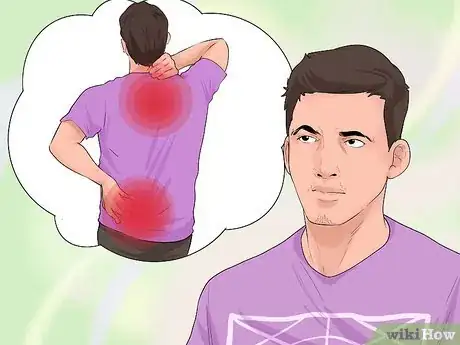
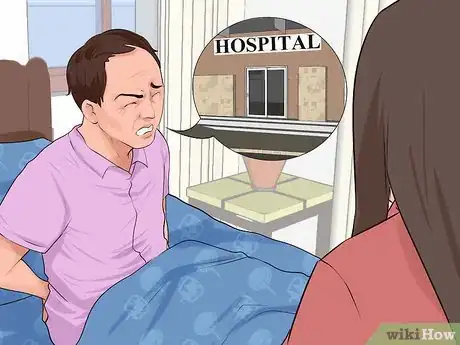
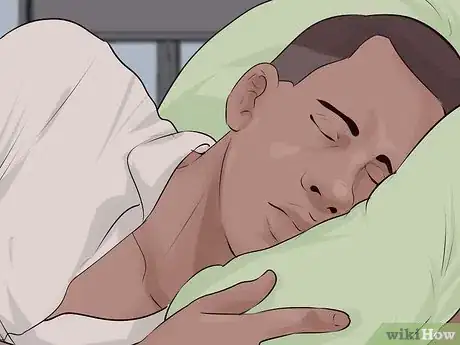
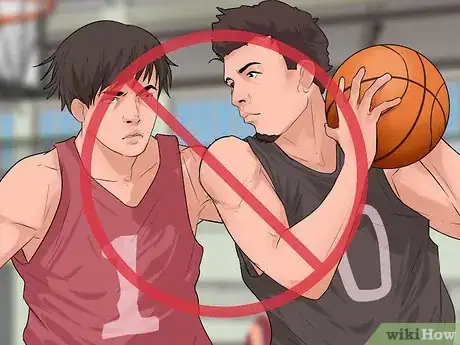
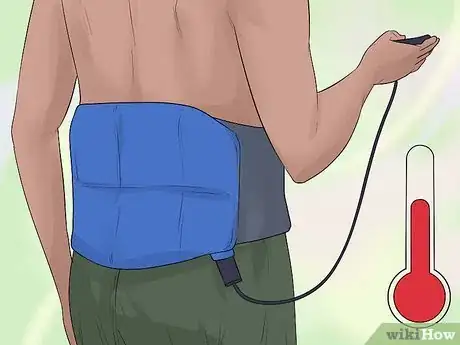
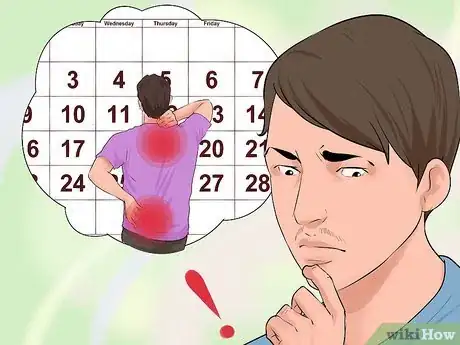
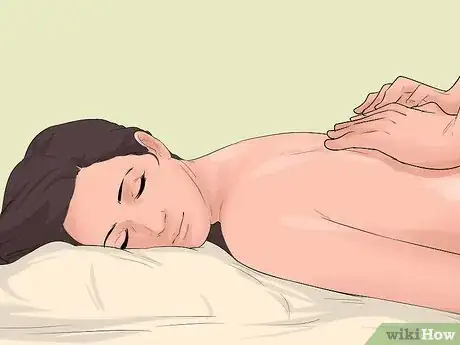

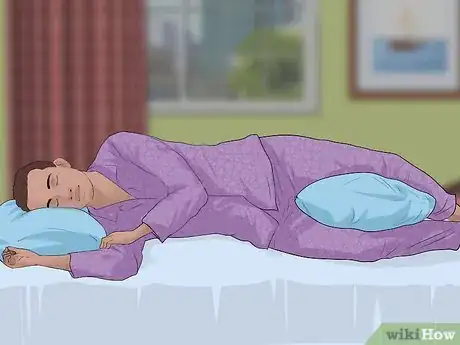
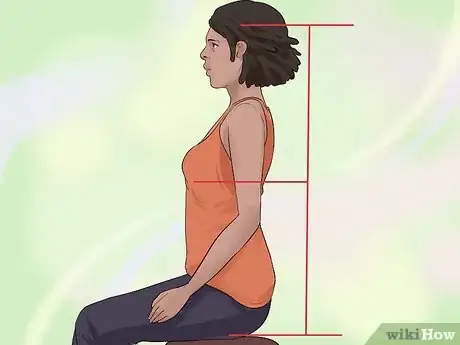

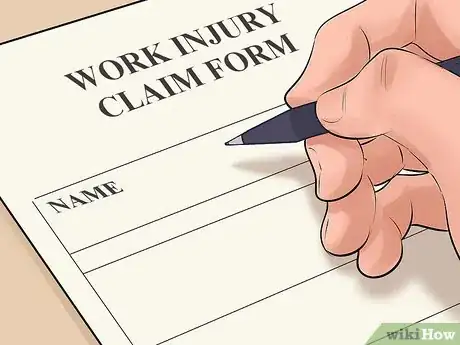
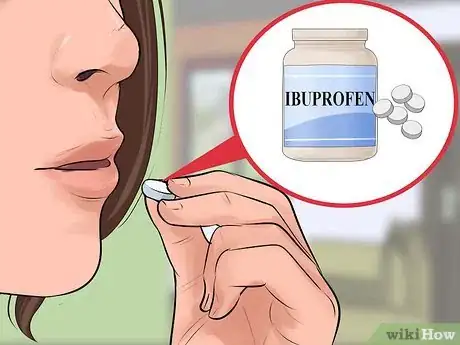
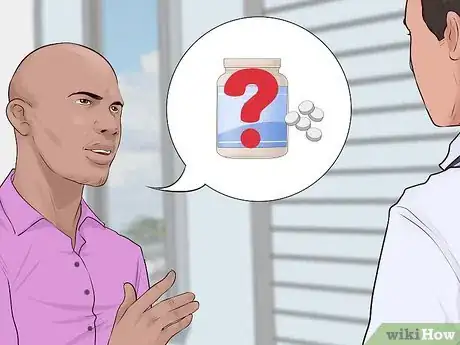
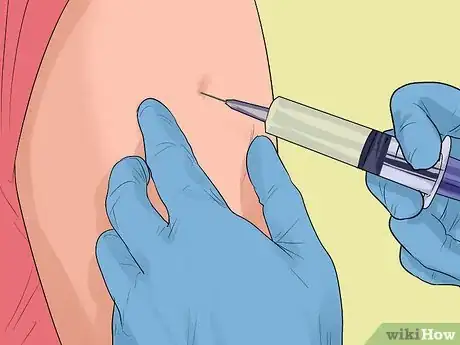

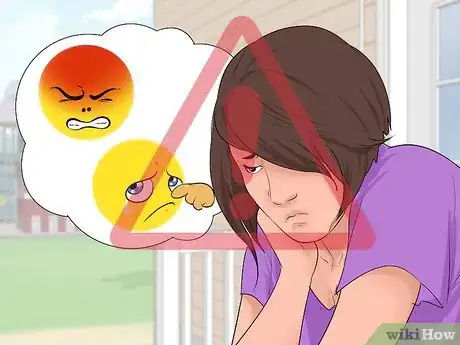


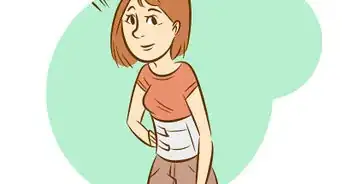
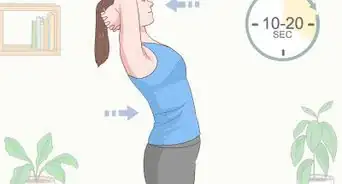

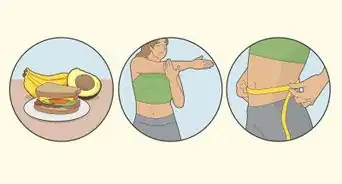

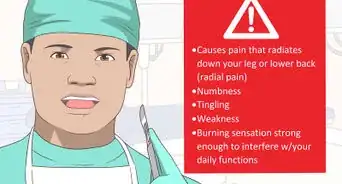
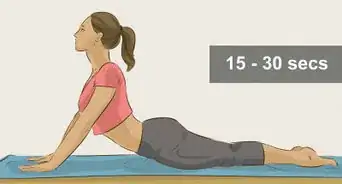
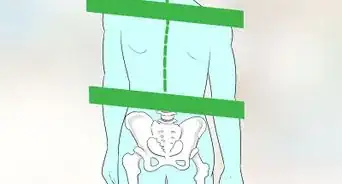

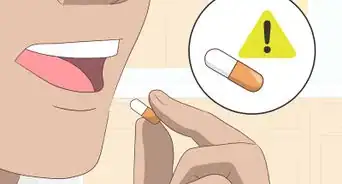

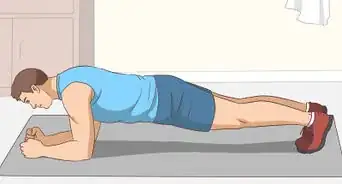
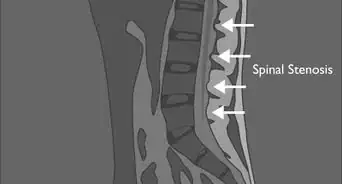










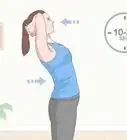
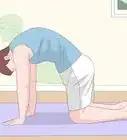
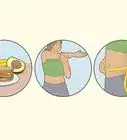



































Medical Disclaimer
The content of this article is not intended to be a substitute for professional medical advice, examination, diagnosis, or treatment. You should always contact your doctor or other qualified healthcare professional before starting, changing, or stopping any kind of health treatment.
Read More...